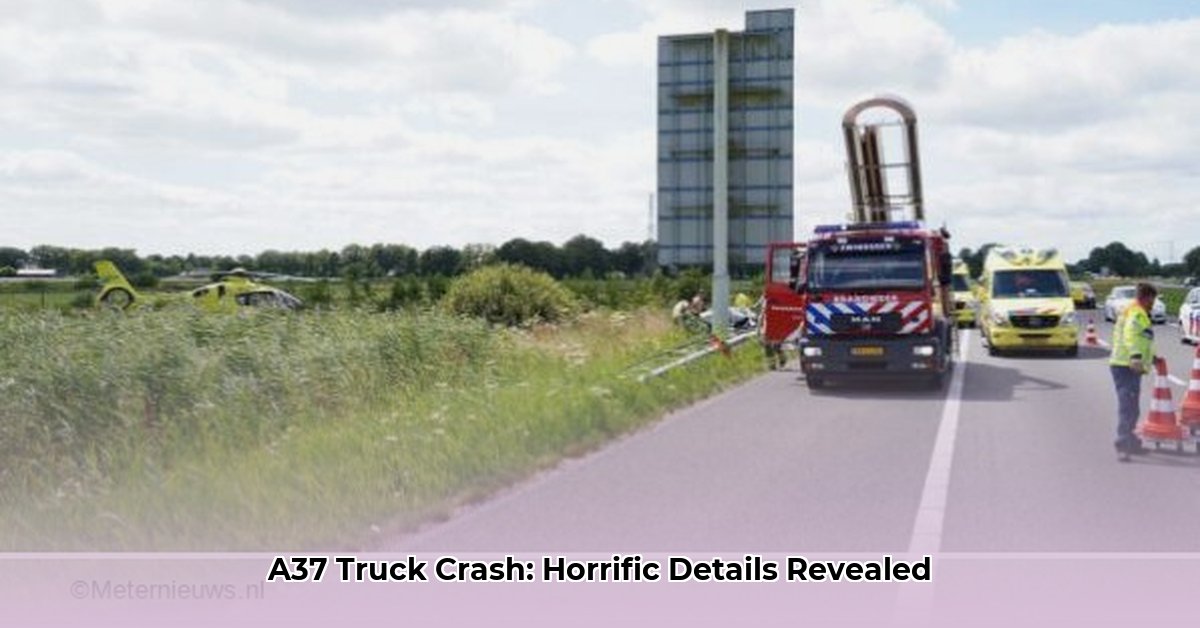
A Tragic Loss and a Call for Change
A fatal truck accident on the A37 near Holsloot, Drenthe, early on the morning of [Insert Date if available], has resulted in the death of a truck driver. This tragedy, which we will refer to as the Ongeval A37, highlights critical shortcomings in road safety and underscores the urgent need for comprehensive improvements. The truck veered off the road and ended up in a ditch. Emergency services responded swiftly, but unfortunately, they were unable to save the driver's life.
Uncovering the Causes: An Ongoing Investigation
The circumstances surrounding the Ongeval A37 remain under investigation by the Dutch police. Several factors are being examined, including possible driver fatigue, potential mechanical failure of the vehicle, and aspects of road design. The exact location of the accident, the precise time, and weather conditions at the time are all being scrutinised to establish a clear picture of events. A spokesperson for the Dutch police indicated that the investigation is expected to provide initial findings within [insert timeframe provided by the police, or "the coming weeks"]. This includes analyzing the truck’s black box data and any eyewitness accounts.
Immediate and Long-Term Actions: A Collaborative Effort
The Ongeval A37 demands immediate action paired with strategic long-term planning to prevent future tragedies. A multi-faceted approach involving various stakeholders is crucial.
Short-Term Actions (Within one year):
Rijkswaterstaat (National Public Works and Water Management): Immediate assessment of the accident site for potential hazards and short-term safety improvements. This might involve temporary barrier installations or enhanced road markings (e.g., adding extra signage).
Truck Operators: Enhanced enforcement of driver hours of service (HOS) regulations (to prevent driver fatigue); improved monitoring systems for driver breaks and adherence to regulations. Increased focus on driver well-being and support systems available to them.
Emergency Services: A thorough review of response times and coordination protocols. This could include improvements in communication and deployment procedures.
The Government: Increased funding for immediate road safety improvements, along with stricter enforcement of existing regulations and heavier penalties for violations.
Long-Term Actions (Over the next 3-5 years):
Rijkswaterstaat: Comprehensive review and potential redesign of the A37 to include an evaluation of problem areas and a long-term improvement plan. This might include road widening in certain sections, the implementation of advanced roadway safety features, and improved lighting.
Truck Operators: Investment in advanced driver-assistance systems (ADAS), such as lane departure warnings and automatic emergency braking. Significant upgrades to driver training programs covering fatigue recognition and management.
Emergency Services: Improved training and simulation exercises to refine response protocols for similar incidents. Exploration of deploying advanced on-site medical capabilities.
The Government: Increased funding for independent road safety research focused on preventative technology and data-driven solutions. A nationwide public awareness campaign to educate drivers about fatigue-related risks.
Key Stakeholders and Their Roles
The successful implementation of these measures requires a collaborative effort. The table below outlines the specific responsibilities of key stakeholders.
| Stakeholder | Short-Term Actions | Long-Term Actions |
|---|---|---|
| Rijkswaterstaat | Immediate site assessment and safety enhancements. | Comprehensive A37 review, infrastructure upgrades, and advanced safety feature installation. |
| Truck Operators/Logistics | Strict HOS enforcement; improved driver well-being initiatives; and monitoring. | ADAS technology investment; enhanced driver training programs focusing on fatigue management. |
| Emergency Services | Review of response times and inter-agency cooperation. | Enhanced training and simulation exercises; improved on-site medical capabilities. |
| National & Provincial Government | Increased funding for immediate improvements; strict enforcement of regulations and higher fines for violations. | Funding for research; public awareness campaigns related to driver fatigue and road safety measures. |
Lessons from Tragedy: A Path Towards Safer Roads
The Ongeval A37 serves as a stark reminder of the tragic consequences of road accidents and the critical need for a proactive and holistic approach to road safety. By working together and implementing the recommendations outlined above, we can strive to create safer roads and prevent future tragedies. The cost of inaction is simply too high.